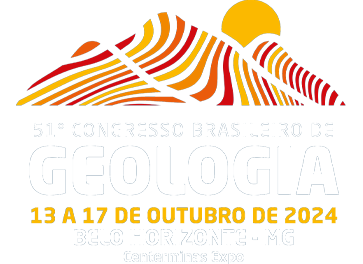Dados da Submissão
Título
Coupled hydrogeological and equilibrium thermodynamics modelling using piChem (PHREEQC + FEFLOW) to estimate brine deposit reserves
Texto do resumo
The challenge of estimating resources and reserves in hypersaline environments relies on the complex nature of ore, existing not solely in a single phase being, whether solid or liquid, but in both. Its stability depends on changes in physicochemical conditions, such as the infiltration of less concentrated solutions resulting from diverse solutions that infiltrate in the lagoon, which can alter the solution thermodynamic equilibrium of salt minerals, that are by nature very soluble. This leads to alterations in the ore phase, either through precipitation or dissolution, directly influencing the resources and reserves of the target area. Changes in flow rates and concentrations of infiltration solutions are expected to increase due climate change and scientific advancements in brine exploration, driven by the lithium race demanded for energy storage technologies due global energy transitions. Therefore, integrate a groundwater flux and transport model with a thermodynamic model is a powerful tool to assess reserves for alkali-earths elements exploited in hypersaline lagoons thought salt precipitation from brine, such as lithium, bitter salts, magnesium, and sodium sulphate. This coupling may be performed using pichem, a plugin which integrates geochemical models in PHREEQC with FEFLOW groundwater flow and contaminant transport models. However, piChem has limitations as it was designed to simulate preferential interaction zones, whether in 2D or 3D models, allowing for a broad-scale analysis of the model's geochemical reactions. Hypersaline environments are highly reactive to changes, whether due to interactions with other solutions or shifts in temperature, which can affect stability conditions leading to ore precipitation, dissolution, dilution, or concentration. Achieving precision in variations that directly impact mining sustainability necessitates detailed geochemical simulations, enabling the interaction of different liquid phases with the mineral phases of the deposit. With this aim, a Python framework was developed to enhance piChem's capabilities, allowing the coupling of a robust hydrogeological model with thermodynamic equilibrium models for solid and liquid phases at each model node. This facilitates the assessment of interactions between boundary condition concentrations, while also accounting for the heterogeneities of the target area and allows for the simulation of dissolution and directed recharge scenarios. Once coupled, its calibration analysis becomes complex, as it multiplies the evaluated parameters, adding to conventional calibration parameters of numerical groundwater flow models the mineral concentration of different stratigraphic facies and the hydrochemical compositions of these environments, and their temporal variations. For multi-factor calibration evaluation, a business intelligence report was developed, utilizing model results and an SQL database containing periodic monitoring data, to create calibration indicators and assess errors. With the calibrated model, another business intelligence report was generated, showcasing resource and reserve calculations and visualizing variations in extreme scenarios, thereby enabling improved management and governance of water resources and their reserves.
Palavras Chave
piChem; PHREEQC; 3D thermodynamic reactive modeling; brine modeling
Área
TEMA 02 - Recursos Hídricos e Geociências Ambientais
Autores/Proponentes
Lara Lange, Tiago Tostes Pessoa, Rafael Albuquerque
